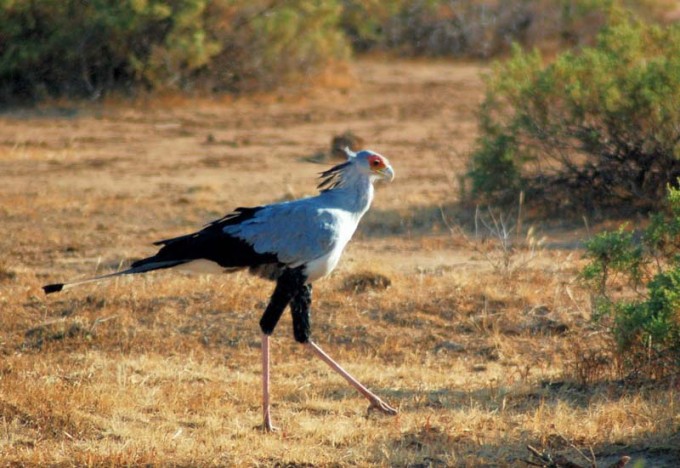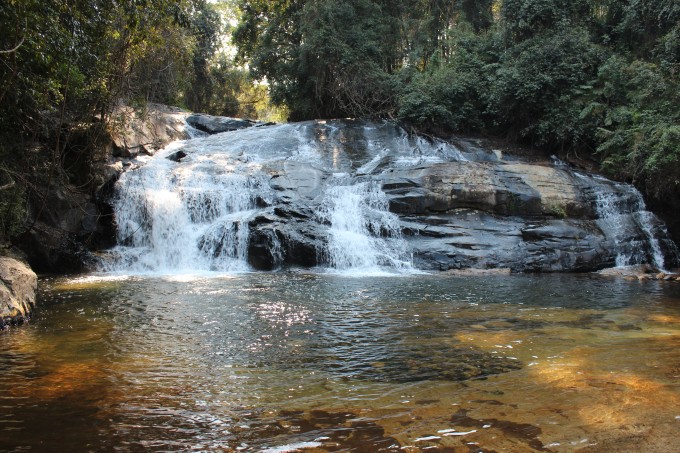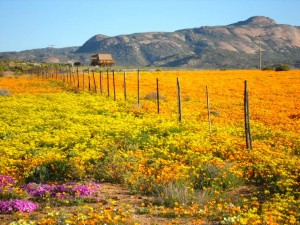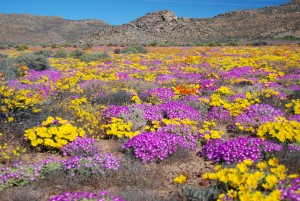Post from category:
Gaia Organics
Gaia Organics is an original South African company specializing in the dedicated manufacture of NATURAL AND ORGANIC Skin Care and Health products since 1994 and based in Plettenberg Bay.
B BEAUTIFUL is a beauty salon in Plettenberg Bay focusing on organic products, animal and eco friendly make up, using the Gaia Organics product range.
Premises situated in the peaceful PIESANG VALLEY road in Plettenberg Bay, for those wanting to visit our shop.
Salon address is : Courtyard, Lookout Centre Main Road Plettenberg Bay 044 533 0133
Gaia Organics : Piesang Valley Road Plettenberg Bay 044 533 1393 / 082 467 0799
- April, 8
- 73
- Travelermag
- More
Haskell Vineyards
Haskell Vineyards makes its home on the slopes of the Helderberg mountain range in Stellenbosch. The Helderberg, also known as the ‘Golden Triangle’, is widely recognized as South Africa’s finest wine growing sub region, and is the residence of many of the most famous names in South African wine.
Since inception in 2002, the central focus of Haskell Vineyards has been to create unique, terroir driven wines that would be recognized as amongst the finest of their style produced in South Africa.
The first wines produced under the Haskell label were from the stellar 2007 vintage, albeit in tiny quantities. Various years since has seen Haskell being awarded the prestigious 5 star accolade by the John Platter Guide, South Africa’s most significant wine publication. It also became the first South African winery since the inception of the Tri-Nations Challenge to win Best Syrah, Best Red Wine and Best Wine of Show in the 2009 competition, where the finest wines of South Africa are pitted against the best from Australia and New Zealand.
In keeping with our philosophy and commitment to excellence, Haskell wines will only be released when they meet our lofty expectations with regard to quality
- April, 8
- 87
- Travelermag
- More
Ceres Zip Slide Tour
This new “foefieslide” adventure is situated in the lovely mountains surrounding the Ceres Valley. A mere 1½ hours’ drive from Cape Town, it is the perfect breakaway from the hectic city life!
Our Ceres Zip slide Tour offers 8 slides, totalling a length of 1.4km – this is the longest tour in Africa! The amazing rock formations and river form a perfect backdrop to a fun-, adrenaline-filled adventure! The surrounding Skurweberg Mountains forms a picturesque backdrop to your journey.
You will be kitted up in a full body harness with state of the art equipment and then 2 fully trained guides will take you on the Zipline tour into the mountain. Price includes a drink during and after the tour.
A short walk takes them to the departure point at the first slide, from where the breath-taking view reaches over the town of Ceres and across the Ceres Valley. Here the fun starts!
The slides vary in lengths from 100 meters to 291 meters! The highest point above the ground is 40 meters. The duration of the tour is group size dependant.
We operate in all-weather circumstances, we don’t have any group size limited, and children from 3 years old can take part in this amazing adventure.
Our office is situated at the “Natuurtuin” at the foot of the Michell’s Pass at the entrance of Ceres town from Cape Town side. (R46)
We are open every day of the year from 8h00 and 9h00 to 15h00 and tours depart every hour, the last departure is at 15h00. Please note that during winter it can be earlier as a result of it getting darker sooner.
Our pricing structure is as follows:
Rate: R 400.00 per person
Special rates for tour group bookings can be negotiated. Bookings recommended.
- April, 8
- 88
- Travelermag
- More
Durbanville Hills Restaurant & Tasting Room
WINE TASTING AND RESTAURANT
Durbanville Hills’ restaurant and tasting room offers contemporary spaces where one can escape the hustle and bustle of city-life or spend a day in their conference facility for meetings with a difference.
The relaxed indoor and outdoor areas of the cellar offer panoramic views of Table Mountain, Table Bay, the rolling hills and adjoining vineyards. The area under the olive trees is perfect for a stylish picnic in season, or to share a platter of cured meats, local cheese and preserve. The tasting room’s décor is chic, inviting wine lovers to linger in the new lounge area with its comfy, contemporary seating and taste the range of wines on their own or paired with foods to bring out the extraordinary flavours of the wines. The tasting room opens on to an outdoor seating area where nature lovers can savour overlooking the renosterveld garden.
The restaurant, head by chef Louisa Greeff, is a light and contemporary space with a double volume ceiling, wood finishes, earthy tones and South African art. The menu is unpretentious and creative, offering both breakfast and lunch and dinner on selected evenings. The conference centre with seating for 50 guests is ideal for corporate meetings and team building.
- April, 8
- 79
- Travelermag
- More

Birding in South Africa
By Simone Loxton
Growing up, we hold opinions that are immature and silly – and one of these silly and immature opinions I held was that bird watching was really, really, really boring. This thought stuck with me until I went to the Kruger National Park last year and got schooled on what bird watching actually entails.
First off, South Africa hosts about one tenth of the world’s bird species. Of the 850 or so recorded species in the country, 85% are residential or annual visitors, and about 50 of these are endemic to our country (meaning they can only be seen in South Africa).
Those numbers alone are sure to convey the high level of interest and activity that bird watching in our already richly versatile country offers – but if you need more, just hold on: South Africa also has an extensive range of visiting birds, flying from other parts of Africa, as well as the Arctic, Europe, Central Asia, China and the Antarctica. Of course, the nine biomes represented in South Africa are part of the reason our natural wildlife is so extensive on the ground as well as in the air.
Of all the birds, it is the endemics that attract the most visitors and interest. Every part of South Africa is home to one kind or another, and some of these places, such as Cape Town, are home to others kinds of endemics, such as fynbos and mammals. There are also a multitude of pelagic trips which offer tours along the coast to check out some seabirds.
Access to birding sites are made easy by the multiple national parks, reserves and conservation areas that have well-developed transport systems and a very supportive birding tourism industry. These areas can be found in every region (you can even take a trip out from Lamberts Bay to the northernmost sea bird island of South Africa, ironically called Bird Island, where a special bird hide was built in 1998. If that’s too commercial, take a hike through the Drakensberg for some sheer natural birding habitats and gorgeous exteriors).
November is the best time for birding, as there is widespread breeding activity and the highest concentrate of migrant birds around. This strong presence can be appreciated up until April, when migrants (both locals and visiting) begin their trek back to the warmer parts of Earth.
But where do you even begin? After my mindset shifted, I download a South African bird watching app which assists in identifying the range of birds through descriptions, pictures and an audio playback of their calls. It allows you to tick them off once spotted and if you’re up for the challenge, learn to mimic their calls.
- April, 2
- 173
- Travelermag
- More

Debengeni Waterfall
By Shellee-Kim Gold
If natural sites awash with water and a touch of the eerie appeal to you, you may just have found what you’re looking for at the Debengeni Falls near Tzaneen in Limpopo.
Translated to mean ’place of the big pot’ in Pedi, locals believe the waters are home to revered spirits.
With the region’s notorious summer humidity, the 80 metre high waterfall is a well-guarded local secret. And a well-frequented picnic spot: attractively laid-out tables under pine trees include braai (barbeque) grills.
Described as ‘magical’ and ‘mesmerising’, to witness nature’s full might at work here, park your car at the falls’ midway point and walk down. Cascading waters flow dramatically down from the top, through forest and over a series of pools. The source of much summer merriment, though, is the deep central pool halfway down the falls.
Even if you’re not swimming but still fancy a bit of a splashing to cool down, the circular walk along both sides of the Ramadipa River and across it should satisfy. Winter wanderers will want to be extra careful of slippery rocks and precariously-placed vegetation on the path. Warning signs are up at various points, as are chains preventing access at dangerous spots.
Nontheless, tomfoolery has reigned supreme at the site – sometimes with tragic results. At the bottom of the falls a chair with a plaque marks the spot where an intoxicated 17 year old lost his life sliding down on the rocks from the top. Numerous other lives have been claimed here this way.
Someone described Debengeni’s atmosphere as having a ‘very strange feel…a touch of (the movie) “Picnic at Hanging Rock” about it’. In the flick a group of Australian Victorian-era school girls on a picnic at Australia’s Hanging Rock suddenly disappear, as if spirited away into the massive rock through some invisible portal. As a mystery-obsessed hack and sometimes-hunter of things supernatural, my theory’s that Debengeni’s ‘mesmerising’ appeal could well be coming from those waterbound revered spirits locals speak of. Though people died rather than disappeared here, it’s still a must-visit for paranormal enthusiasts.
Another must-see is the Modjadji Cycad Reserve just 30 minutes away. It has the world’s largest concentration of a single cycad species and gets you feeling like you’ve arrived on the set of Jurassic Park or time-travelled to a prehistoric era.
- April, 2
- 92
- Travelermag
- More
Cheetah Outreach
By Simone Loxton
You wouldn’t think such a unique and beautiful creature such as the cheetah is endangered. Every part of its anatomy has evolved to be the fastest and swiftest hunter, using short bursts of speed of up to 120km/h to attack its prey. The animal is also a prolific breeder, bearing up to nine cubs in a litter. However, they have a mortality rate of 50 – 70% as their need for speed has deteriorated their ability to defend against larger, stronger predators. Oh, and mankind.
Because of this, a number of Cheetah conservation reserves have popped up in an attempt to curve the mass deterioration of the slick and agile creature’s numbers through breeding and education. Some are successful, but the cheetah has become notorious for its inability to breed within captivity.
The Samara Private Game Reserve has been successful, however, because of its different take on the idea of captivity. Located in the Great Karoo, Eastern Cape, Samara made history by introducing the cheetah back into a region that once had a diverse wildlife and was consequently destroyed by hunters and poor agriculture routines. The last reported wild cheetah was seen in the area approximately 125 years ago.
Released into the reserve in 2008, a badly treated female, Sibella, along with two males, was given the chance to live naturally in an environment free from predator competition found in the Big five reserves. She has since contributed to 2% of the wild cheetah population in South Africa, bearing a total of 18 cubs.
Unlike the traditional idea of a cheetah conservation outreach, you aren’t able to casually hang out with the cheetahs at Samara. Instead, game drives enable you to see them in their natural habitat, all the while knowing that they were saved for by those who love them the most.
If you would like to interact with cheetahs and have a more personal experience with them, the Cheetah Outreach is an education and community-based programme at Paardevlei in Somerset West in the Western Cape. Founded in 1997 by Annie Beckhelling, the programme is continuously evolving and partners with ambassador cats to educate learners at various schools. The Cheetah Outreach is open all year, from 9:30 to 17:00. If you’re up for a personal encounter with one of their ambassadors, be there at 10:00, but remember, it’s up to the cat!
- April, 2
- 143
- Travelermag
- More
The Fish River Canyon
By Shellee-Kim Gold
Hiking the Fish River Canyon is not for the faint of heart – or body. You’ll need a decent level of fitness to tackle the twists, turns, ridges and rocks. And have nicely flexible kneecaps to boot. You’ll also need ample gratitude in your heart for the sheer magnificence of what the world’s second largest Canyon will bestow upon you.
I’m regularly awestruck into silence (a rare occasion) by both mountains and deserts. This three to five day/85 kilometre trail from Namibia’s Hobas to Ai-Ais combine both of these, throws in numerous rock pools en route and adds semi-arid growing succulents, shrubs and the spiky quiver tree. Strictly-speaking, the Canyon is semi-desert.
But whichever way you see it, you’ll be hiking backwards in time on a journey into 1.5 billion years of geological history. Proof of this is in the massive boulders and twisted rock formations. Cameras are a must as views are jaw-droppingly sublime in the 500 metre deep Canyon.
A closed pair of shoes and a fully-functional zipped tent are to become your best desert friends as a Canyon camper. Wearing shoes at night about means you’ll be able to appreciate predators instead of fearing them. Like the thick-tailed scorpion whose sting can kill you and the small, venomous adder snakes. Then there’s the less lethal ‘Kalahari Ferrari’ sun spider. So called due to the phenomenal speed it moves at. Sun spiders don’t spin webs, but are said to have the most powerful jaw in relation to their size. Make sure no part of your anatomy gives the sun spider reason to prove that theory right!
Sighting some of Namibia’s wild horses would be the cherry on top on this hike. And though no one knows with certainty, some say the horses are descendants of the German colonists’ herds who abandoned their horses in the desert after the First World War.
Dependent on rainfall, you may or may not get to frolic in the Fish River’s numerous sulphur-rich pools en route. On arrival at Ai-Ais (Nama for ‘burning water’) that won’t matter. Because 60 degree springs here are fed to a swimming pool and Jacuzzis at the government-run resort that you can treat yourself to.
If you like the idea of safety in numbers and saving energy while you admire the desert-loving klipspringer (rock jumper) and other antelope, ostrich and wild zebra, consider exploring the canyon by mule.
- April, 2
- 163
- Travelermag
- More
Namaqualand Flowers
By Simone Loxton
There’s a special phenomenon that occurs annually through the months of July to September. The land that is at once a wilderness of semi-desert – an arid and dusty plain that stretches below the base of an extensive mountain range – slowly adopts a carpet of orange, white, yellow and purple.
Throughout South Africa, this phenomenon is known as the Namaqualand daisy season, when multiple flower species spring up to conquer a piece of South Africa. For only a short spell and as if tainted by a painter, the flower route begins roughly five hours north of Cape Town. However, in true daisy style, the flowers live by the sun, so approaching them from the north is the best way to view the multitudes of species which include not only daisies, but also Gousblomme, Vygies, Nemesias, Lachenalias, Babiana and Ixias. Certain species are only found in these parts – species such as the yellow Leucospermum Reflexum, the Snow Protea (Protea Cryophylla), blue Lachanaea Filamentosa, yellow Sparaxis, pink Cyanella Alba and the Clanwilliam Cedar (Widdringtonia Cedarbergensis).
Relying heavily on the weather, the some 4 000 species of plant seeds lying patiently to germinate each year requires a different weather formula to do so. Because of this, every year is different including the times, colours and range of flowers on display. But, at the same time, the reliance on the weather may cause a sort of non-phenomenon, making some years worse than others. The best way to find out where and when is to contact the local tourist information shop – depending on which dorp it is you plan on visiting.
The flowering systematically begins up north where the sun hits with its warmth first after the cold winter months, and flows down south, hence the extensive time period of opportunity. The real flower show belongs to a series of drives that centre on the towns of Garies, Springbok, Kamieskroon and Port Nolloth, way up the N7. Included in the wild flower route are the Richtersveld National Park, Goegap Nature Reserve, and Skilpad Wild Flower Reserve.
Take at least two to three days to holistically view the spectacle. Once there, you don’t need to drive, but instead can hike or cycle your way through the torrent of colour. The best time to view the flowers is between 10:30 and 16:00, so there’s no rush – but if it’s overcast or raining, it’s not even worth it as the daisies won’t even open. If you are only able to make it during September, skip Namaqualand and stick to the West Coast as the flowers will be in their prime. Just remember, the flowers are there to be seen, not picked!

- April, 2
- 551
- Travelermag
- More

